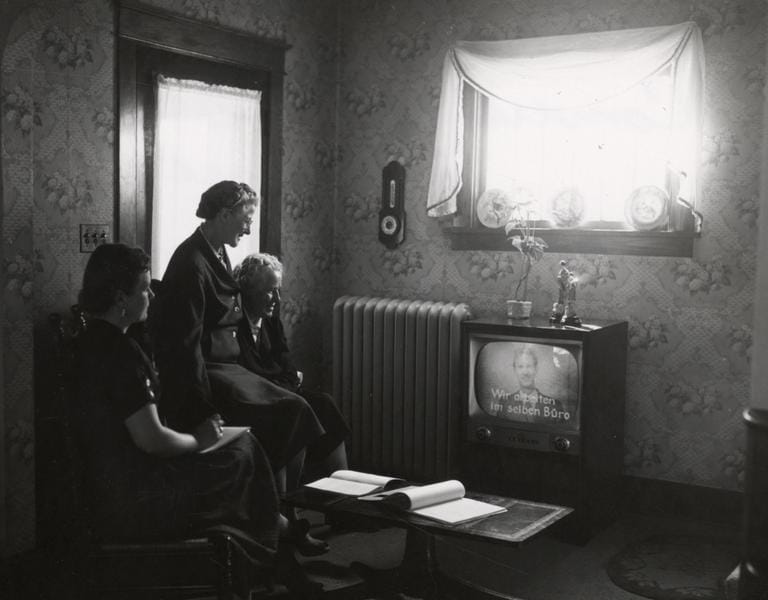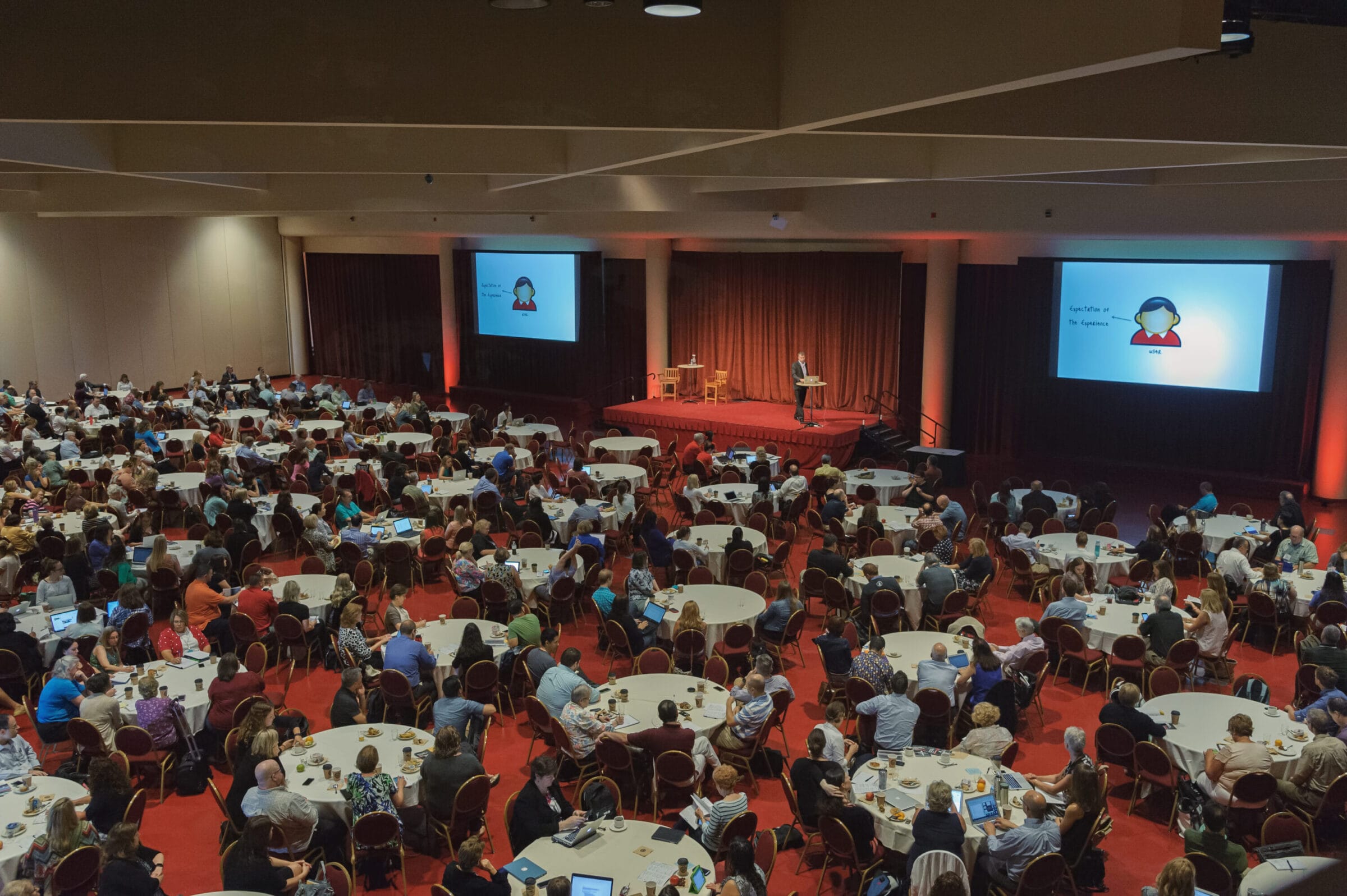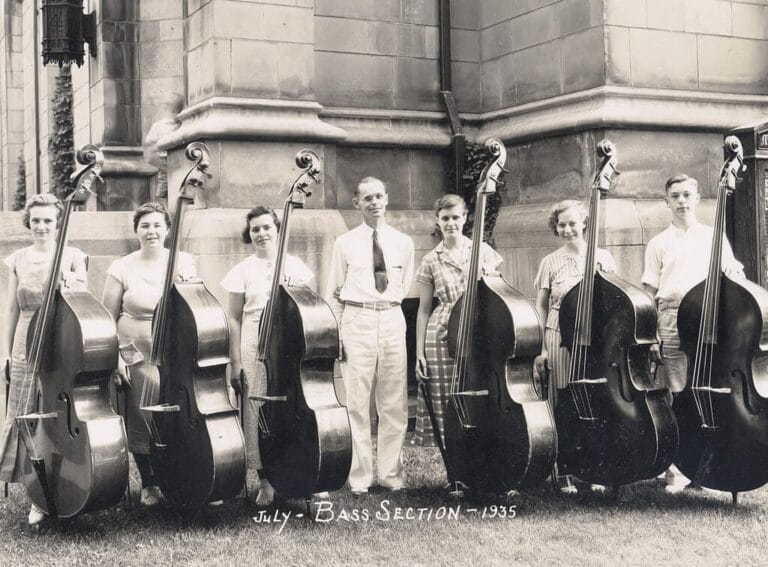Innovation + access: The evolution of technology in continuing education at UW–Madison
Long before Zoom classrooms and digital discussion boards, education traveled by mail. Envelopes packed with assignments and hand-graded feedback were the lifeblood of correspondence courses at the University of Wisconsin–Madison, starting in 1892 and continuing through the 1990s when the UW–Madison Division of Continuing Studies (DCS) came to be.
“We’d receive each assignment in the mail, grade it and send it back with comments,” recalled Jamie Henke, a distinguished teaching professor in DCS. It was a lengthy process, but for students in rural Wisconsin or halfway across the world, it was their ticket to higher education.
From rural high schoolers mastering German to incarcerated students exploring new horizons, the seeds of educational accessibility have grown into a robust online learning ecosystem. Today, DCS continues to prove that education isn’t just about earning a degree—it’s about opening doors, embracing possibilities and enriching lives at every stage and through all technological change.
History of tech in continuing education
Continuing ed at UW–Madison has often been ahead of its time, pioneering new ways to deliver education far beyond the classroom and provide access to learning. It started in 1885 with a modest 6-week summer language program for just 14 students. By 1892, the idea of correspondence courses, led by Professor Richard Ely, turned education into a mail-based lifeline, reaching students who couldn’t come to campus.

Then came the airwaves. In 1931, the university partnered with radio station 9XM (now WHA) to launch the School of the Air, delivering lessons to K-12 students across Wisconsin. It didn’t stop there—WHA soon introduced the Wisconsin College of the Air, making radio a classroom for adult learners.
By the mid-20th century, distance education programs were breaking global boundaries. Correspondence courses reached U.S. troops through the Armed Forces Institute, while engineers across the states tapped into specialized programs. Even as these initiatives gained traction, distance learning faced skeptics. But Charles Wedemeyer, appointed director of correspondence education in 1954, refused to let resistance deter progress. His tenure solidified UW–Madison as a leader in educational innovation.
Television brought a new dimension to remote learning in 1959, offering courses to students until the 1990s, when the internet revolutionized everything. Phones also played a pivotal role: in 1965, aspiring physicians could join teleconferences and live Q&A sessions, with pre-recorded lectures, paving the way for today’s asynchronous learning. By the 1970s, UW combined phone and TV technology for early two-way video communication, foreshadowing modern Zoom classrooms.
The digital era of the 1980s transformed distance education even further. In 1985, UW–Madison hosted the nation’s first conference on distance learning, attracting innovators from across the country. And in 1994, Continuing Studies officially became its own division, embracing the rise of online coursework and ushering in a new chapter of accessibility and innovation.
From mailboxes to modems, continuing education at UW–Madison has been on the cutting edge, proving that where there’s a will to learn, there’s a way to teach.
An emphasis on access
For Continuing Studies, technology merely serves a purpose – providing access to education. From its roots in mailed correspondence courses to today’s dynamic online classrooms, DCS has been a leader in making learning available to students of all ages, backgrounds and circumstances. From the mid 1990s, DCS quickly grew into a dynamic continuing education program, driven by a commitment to equity.
Alan Ng, a self-described tech tinkerer who grew up in Silicon Valley, brought his unique talents and passion for education to DCS in the 1990s. With a PhD in German from UW–Madison and a deep appreciation for egalitarian ideals, Ng saw education as a tool for empowering those often left out of traditional academic spaces.
Ng’s journey with DCS began thanks to a music professor and bandmate, who connected him to Jamie Henke, a faculty member determined to bring correspondence courses into the digital age. At the time, the “world wide web” was a novel concept, and email was still gaining acceptance among faculty.
“There wasn’t even a word for my position,” Ng recalled. “I was just a grad student playing around with this internet thing.”
Together, Ng and Henke pioneered the integration of internet technology into correspondence courses, transforming the way students engaged with their studies. Ng’s technical expertise and dedication to democratic ideals fueled innovations that expanded educational access globally, embodying the spirit of the Wisconsin Idea: using knowledge to improve lives across the state and beyond.
Ng’s contributions to DCS weren’t just about technology; they were about breaking down barriers. His work in creating online course materials for undergraduate students in the German Department set the stage for the inclusive and forward-thinking programs that define DCS today.
Whether offering education to low-income adults through the Odyssey Project, flexible opportunities through the Professional Degrees and Certificates program or fully online degrees through UW–Madison Online, access is more than a buzzword at DCS. It’s the foundation of a legacy that continues to grow, ensuring education is available to all who seek it.
Innovation: a gateway to education
Ng continued to guide DCS into new tech territories with the example of groundbreaking predecessors.
When Marshall Cook joined DCS as a communications professor in the late 1970s, he was already shaking up the traditional classroom. Cook had introduced email-based correspondence courses for his creative writing students, who loved the flexibility and accessibility of the format. His specialty became working with nontraditional students in unconventional settings: small-town newspaper editors, retirees, low-income adults, incarcerated individuals and more.
Building on this success, Ng saw an opportunity to push the boundaries even further. With email-based courses gaining traction, he developed a web-based component to complement the format.
“Students were willing to pay for online courses,” he said, “so the demand was clear—it was time to expand.”
However, Ng faced challenges as one of the few IT experts in DCS. Determined to elevate the division’s visibility and streamline processes, he began attending campus-wide IT meetings to collaborate with groups like DoIT. One of Ng’s key priorities was simplifying the enrollment process for online students, which, at the time, required multiple days until students could access their course materials. Working with Jeff Russell, then vice provost, Ng advocated for funding his vision for a more seamless digital experience for learners.
As email and the web gained prominence in the early 2000s, Ng also embraced Internet marketing techniques, shifting course promotions from newspaper ads and brochures to targeted email campaigns and web pages. The result was greater course visibility, reduced costs and a surge in online enrollment.
However, the real test of its adaptability came in 2020, during the COVID-19 pandemic. As the world shut down, the demand for online learning exploded. DCS faced the challenge of ensuring equitable access for nontraditional and marginalized learners. In February 2020, DCS and campus partners launched UW–Madison Online.
The pandemic also sparked a renewed interest in live online learning and Massive Open Online Courses (MOOCs). Introduced at UW–Madison in 2012, MOOCs aimed to connect learners where they were, offering free or affordable courses for enrichment and research. In their first three years, UW–Madison’s MOOCs reached over 135,600 students from countries like India, Mexico and Singapore. While UW–Madison’s use of MOOCs has shifted in recent years, the format has expanded globally, offering everything from short courses to master’s programs.
From email to MOOCs and beyond, DCS has consistently embraced technology to break barriers and bring education to the widest possible audience—proving that innovation and access go hand in hand.
The future
Now deep into the digital age, artificial intelligence (AI) has become a buzzworthy tool in academic settings. Yet, Ng is cautious about its role in shaping the future of learning. “AI won’t be the answer for everything,” he notes, challenging the notion that technology should lead the way in education.
Instead, Ng emphasizes a student-first approach—a philosophy deeply embedded in the DNA of continuing education at UW–Madison. “DCS and all of our previous continuing education programs have a positive record of not trying to lead with technology, but letting the students lead,” Ng says. He points to Marshall Cook’s early adoption of email correspondence as an example: it wasn’t the technology or the institution that motivated the change, but the students themselves who proposed it as a way to transition from traditional mail.
This principle ensures that DCS remains adaptable to the diverse needs of its learners. The focus isn’t on adopting the latest tech for its own sake but on meeting students where they are, providing tools that align with their goals and circumstances.
Looking ahead, DCS remains committed to its core value of equitable access to education. As new technologies emerge, the division will continue to prioritize flexibility and inclusivity, ensuring that learning opportunities are available to all—whether they’re connecting from a rural town in Wisconsin or from across the globe.

“The future of education isn’t about the tools we use; it’s about the connections we create,” Ng reflects. “At DCS, that means keeping the student at the center of everything we do.”
For more information, see the DCS website and DCS history site.
Published on Apr 07 2025
Last Updated on May 19 2025
Categories: Division of Continuing Studies, News



